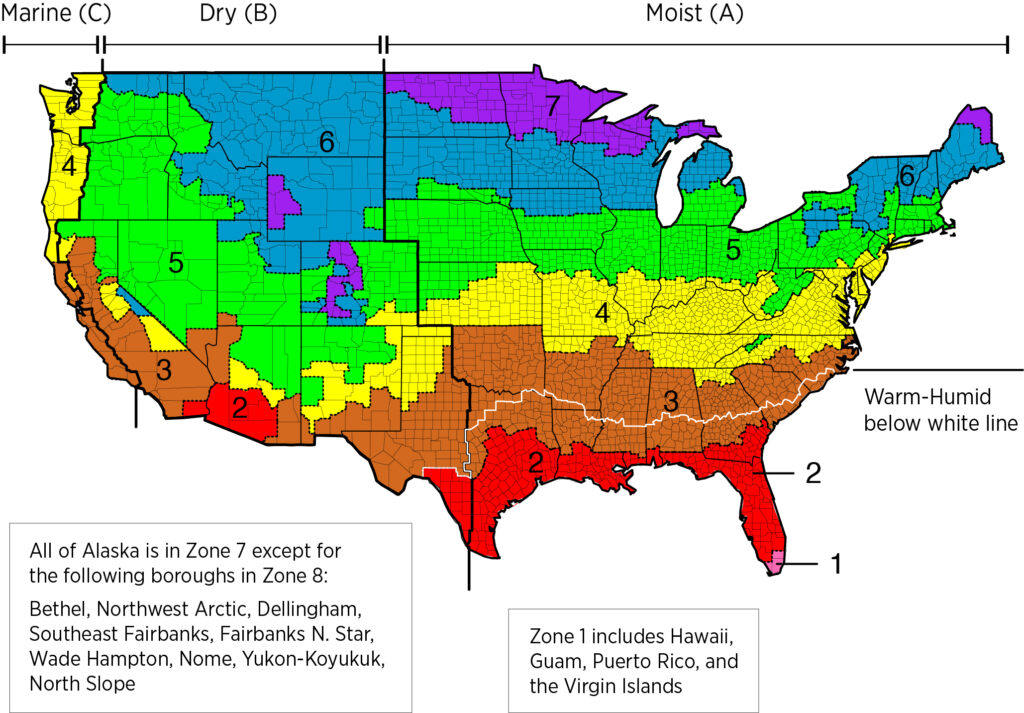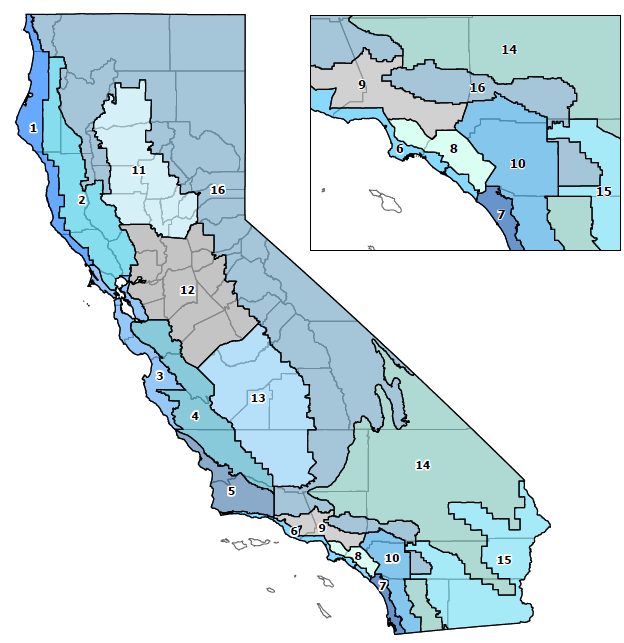
When designing a building, two of the earliest variables that need to be considered are Climate and Siting, since they dictate materials, assemblies, systems, and layout. The California Energy Code addresses the climate of a project’s location by establishing different code minimum or maximum requirements based on the project’s Climate Zone. However, climate zones in building codes are not unique to California, which has caused confusion for some project teams and multiple inquiries to our Code Coaches.
ASHRAE and the International Code Council also have climate zones. In 2004 the U.S. Department of Energy’s Pacific Northwest National Laboratory developed a map that was adopted in the 2004 International Energy Conservation Code (IECC) and ASHRAE 90.1. Prior to 2004, there were multiple standards across the country.
The California Climate Zones and the IECC/ASHRAE maps both serve as frameworks to categorize the diverse climatic conditions across regions, but they do so with different approaches and purposes.
To make matters even more challenging, The California Building Code (CBC Title 24 Part 2), references ASHRAE climate zones for specific envelope conditions, while the Energy Code, Title 24 Part 6, of course references the California Climate Zones.
ASHRAE or California Climate Zone?
ASHRAE Climate Zones are a nationwide standard, splitting the United States into eight primary zones, each with its own set of subzones. These zones consider factors such as average annual temperature, heating and cooling degree days, and humidity levels. The aim is to provide a broad overview that helps in designing HVAC systems, building envelopes, and energy efficiency measures suited to each zone’s climate. Mechanical engineers, energy performance guidelines and equipment manufacturers frequently use this standard.
IECC/ASHRAE Climate Zone Map:

In contrast, California Climate Zones were developed specifically for the state by the California Energy Commission (CEC). Given California’s unique and varied geography, the state is divided into 16 distinct climate zones. These zones are more granular than the ASHRAE zones, capturing the microclimates found within California’s borders. This detailed division allows for more precise energy efficiency standards and building codes that cater to the specific needs of each region in California.
California Climate Zone Map:

For Title 24 energy code compliance, selecting the correct climate zone is crucial, as requirements can vary significantly depending on location. For example, some climate zones (CZ) prescriptively require R-30 roof insulation, while other climate zones require R-38. Other examples of measures that vary by climate zone include water heater type, Solar Heat Gain Coefficient (SHGC) for glazing, radiant barriers, and more. So when a California project comes in inadvertently using ASHRAE’s climate zone, you can see that they’re off to confusing start!
Ultimately, the IECC/ASHRAE Climate Zones provide a broad, national framework useful for general guidelines and standards, including the CBC. The California Climate Zones, on the other hand, offer a more detailed, state-specific approach for energy code requirements. This enables tailored energy policies and accurate cost-effectiveness analysis that address the unique climatic challenges within California. Since both systems apply to California construction, it is essential for the project to reference the correct one when demonstrating energy code compliance.
For more information and in-person trainings, please check out our events calendar at 3c-ren.org/calendar-of-events-and-trainings
The on-demand webinar page is at 3c-ren.org/on-demand-trainings
And feel free to reach out to the Code Coach Hotline for more information or to have your Energy Code or CALGreen questions answered! 3c-ren.org/energy-code-coach
